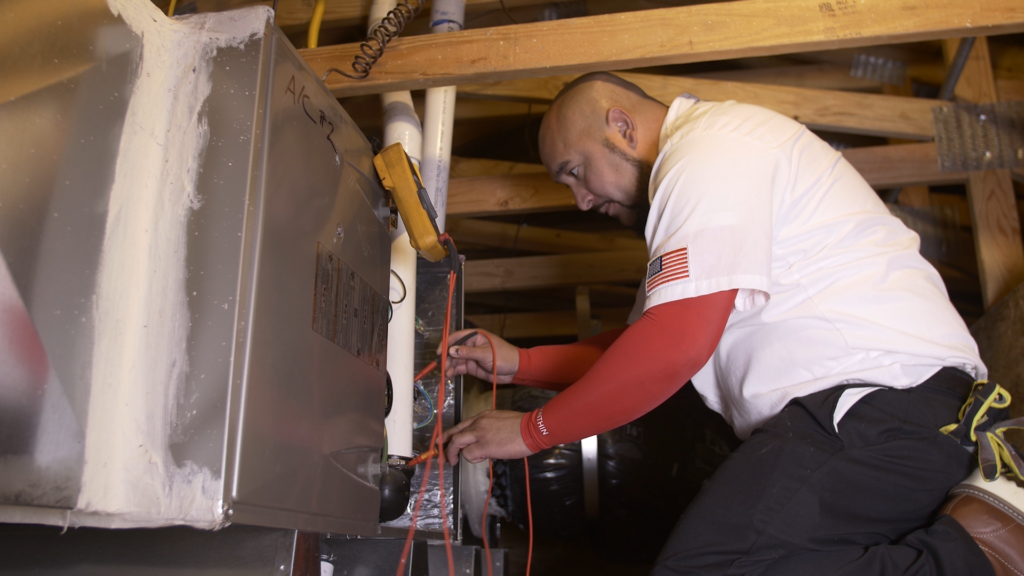Reducing the Risk of Carbon Monoxide Poisoning

Protect your household from carbon monoxide risks by having your heating system checked on a regular basis. Photo: Perfect Star Heating & Air Conditioning ©2020
Carbon monoxide is an odorless, colorless gas that can be released by HVAC units, portable chemical heaters, and gas appliances and heating systems. Most people assume they’re safe from harm if their heaters are running normally, but in reality, any heater that hasn’t been properly maintained can put the home and its occupants at risk for carbon monoxide poisoning. For example, if the furnace’s heat exchanger cracks, it can leak fumes into the home, presenting a serious issue that may go completely unnoticed. Venting issues (such as a pipe that breaks or gets blocked) can also increase the risk of carbon monoxide poisoning.
The best way to protect your household from this risk is to have your heating system checked on a regular basis. An HVAC contractor can inspect your furnace and heat exchanger and test your vent pipe to make sure it’s flowing properly. During the inspection, the technician will also clean the system and make adjustments that optimize efficiency.
In addition to getting professional inspections, here are some tips you can follow to minimize the risk of carbon monoxide poisoning in your home:
- Ensure all gas appliances and heaters are properly vented to the outside of your home.
- Never attempt to patch or seal damaged, cracked or weak vent pipes. Instead, have them professionally repaired or replaced by a licensed contractor.
- Never use flameless chemical heaters (sometimes referred to as “catalytic heaters”) in your home, garage, trailer or any other enclosed space.
- Have your chimney cleaned and inspected annually if you use a wood burning stove or other type of stove that burns pellets or fuel for heat. Blocked chimneys can cause carbon monoxide and other gasses to build up in your home.
- Have your refrigerator’s cooling unit inspected regularly, especially if you can smell coolant or chemical odors.
- Install a carbon monoxide detector on every level of your home, including the attic/basement and garage (if attached). Detectors should be situated at least five feet above floor level and in a location where they can be easily heard from all rooms in the house. Change the batteries every six months and test the detectors regularly. To learn more about installing carbon monoxide detectors, read this article.